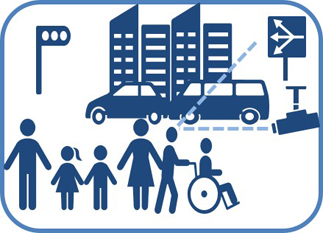The Japanese company NEC Corporation reports developing “remote gaze detection technology”. It enables real-time detection of the direction an individual is looking, even when using cameras from remote locations.
Conventional technologies estimate an individual’s line-of-sight using specialised devices equipped with infrared lights and cameras that detect light as it is reflected from an individual’s eye.
This new technology, developed as part of NEC’s artificial intelligence (AI) technologies, NEC the WISE, uses face feature point detection, the core of NEC’s face recognition, to identify characteristics in and around the eye, such as the pupil and the corners of the eye, from images taken with common cameras, including web, surveillance, tablet and smartphone cameras, without the need for specialised equipment, the developers say. These images and technology enable detection of an individual’s line-of-sight, with a measurement error of less than 5 degrees from the left, right, top and bottom.
Remote gaze detection’s response to low resolution images and changes in brightness enable it to detect an individual’s line-of-sight, even when they are separated from the camera by 10m, making it well suited for automatically detecting products that draw the attention of shoppers at retail stores, according to the firm.
Computations of its “feature value extraction technology” enable it to simultaneously detect the line-of-sight of multiple people, without compromising the accuracy of its results, it is claimed. As a result, even when multiple persons appear in a camera, it is possible to simultaneously detect the line-of-sight of each person, according to the firm.
Akio Yamada, general manager, Data Science Research Laboratories, NEC Corporation, said: “Based on this technology, NEC can evaluate the line-of-sight of pedestrians and help to optimize the placement of important announcements on public streets. Moreover, the technology can contribute to the safety and security of our communities by helping to monitor the behavior of suspicious individuals. This is in addition its business potential, where the technology can help retailers learn more about which products are attracting the most attention from visiting customers.”









